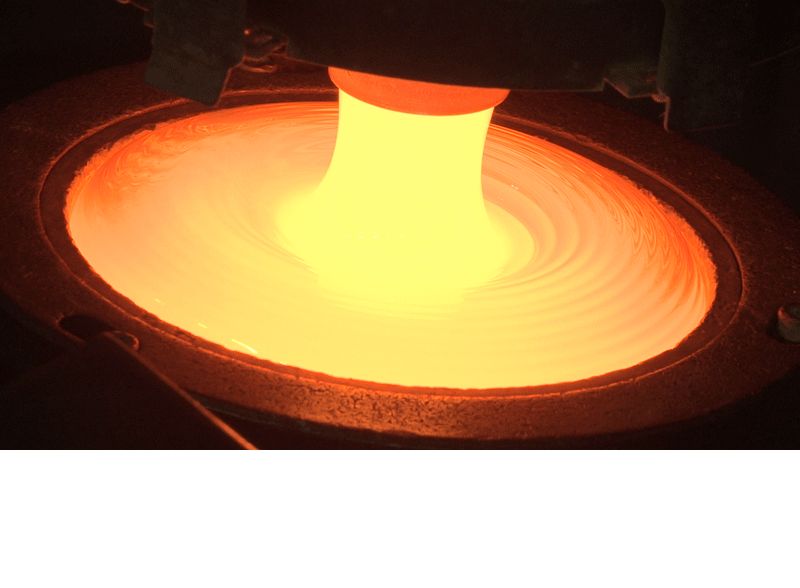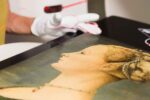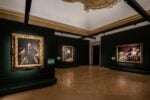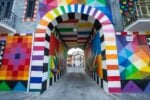Ali Kazma – Care

Mostra personale
Comunicato stampa
Ali Kazma’s solo exhibition at Francesca Minini Gallery takes its title from a human behaviour, essential for the accomplishment of man’s struggle against his own temporality and his desire to overcome his own limits. “Care” is a recurrent motif/leitmotif in Kazma’s videos, often manifested through the concentrated gaze of his subjects as they perform their tasks.
Comprising three pieces from his comprehensive video series Resistance, the exhibition also presents Kazma’s latest piece Crystal, a new addition to his Obstructions series. Through a spatial composition that allows the works to run concurrently, Care aims to offer a viewing experience in which the binding contexts of these works gradually expand and generate new meanings and suggest new possibilities for thought across a network of relationships formed between the body, labour and production.
In Obstructions series which he began to produce in 2005, Ali Kazma has observed the diversity of man’s physical production and what such production might mean within the context of human nature. The effort to resist, which is implied in the title of this series, refers to the fundamental scientific truth that everything must eventually disintegrate and perish. Such ‘obstructions’ point to the sum of production and repair activities as the individual’s endless effort to fight this absolute process of annihilation—and ultimately, death—in order to at least slow down and delay this process.
The following series Resistance, which was premiered at the pavilion of Turkey in the 55th Venice Biennial, Ali Kazma has explored the interventions and strategies that both release the body from its own limits and restrict it in order to control it. Evolving out of the Obstructions series, Resistance explores the ways in which the body is shaped today via scientific, cultural and social tools, and how as a performance site it is repeatedly reproduced. These works convey the productive activity of the body as a creative force directly onto the body itself: the producer and the produced, the shaper and the shaped are united here in the materiality of the body. In other words, Resistance is an artistic survey on the struggle to break the social, cultural, physical and genetic codes of the human body in order to render it perfect, as well as the processes during which the body becomes, or is transformed into a conveyor of new symbols and meanings.
The majority of the works in both series deal with human beings’ effort to secure the continuity, control, and comfort of their bodies. The field of execution, or the final product of such activities could be a material object (Crystal), while at other times the body is revealed in performance (Calligraphy, Play), or becomes the site of the performance itself (Tattoo).
Crystal was shot in France at a glass factory founded in 1584. The traditional and very fine production of these luxury glassware goods necessitates the coordination of several workers and craftsmen in a manner akin to choreography, as the raw material should take its final form in a very short span of time when it is still extremely hot and almost in a fluid state. In Crystal, Kazma’s camera renders the magical ability of man to give shape to things through his own careful gaze that focuses on abstracted details of colour and form as well as the workplace itself as a site for cooperation, solidarity and harmony.
What Ali Kazma observes in Tattoo is one’s most personal and intimate site and the interventions directly performed on it. These artistic interventions applied to the ‘skin’, as a surface layer that both divides and also enables contact with the outside world, could also be understood as an attempt to tear the body away from its own site and relocate it onto another. The video shows the process through which a body moults its skin and gains a new shell to indicate the possibilities the body bears as a cultural conveyor. We can think of this act both as an effort of individual resistance and singularisation against social, class and gender norms, and as an act aimed to inscribe the body with common symbols to achieve a sense of collective belonging.
While on the next screen the hand of a calligrapher slowly moves across a blank piece of paper leaving permanent marks that are extensions of his own body, in Tattoo the paper is replaced by the body itself as a living surface for painting. This at times painful process of painting on the biological canvas, transforms the body into the bearer of a new mythology it has created for itself. Close-ups on the details of the painting that slowly appear on the surface of the body enable us to perceive the projection screen as the surface of a painting that acquires movement, volume and rhythm as it breathes. Among all the colours, patterns, human and animal figures, dragons and demon faces that take over this breathing surface to initiate their own lives, there is also a skull. This figure, which has been modelled on a real skull in the tattoo studio, seems to grasp the body with its teeth to regain flesh, or is settled on the body to eternally remind it of “the possibility that this breath may be the last”.
Play, shown in a separate room within the exhibition space, stages the representation of the body through another artistic discipline; the theatre. Shooting the Wooster Group’s Hamlet rehearsals and the actual performance, Ali Kazma takes the audience into a haunted world where the borders between the past and the present, the original and remake, real and representation are skilfully blurred; a world of ghosts that evokes contemplation on memory, loss and death in a seemingly contrasting technological set-up.
This text was compiled from Emre Baykal’s previously published writings on Ali Kazma's exhibitions Resistance and timemaker.



